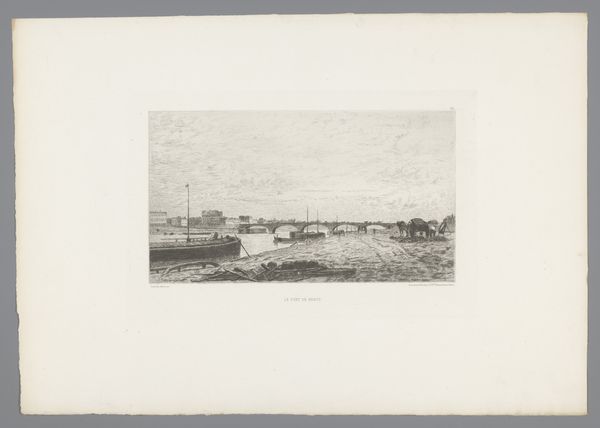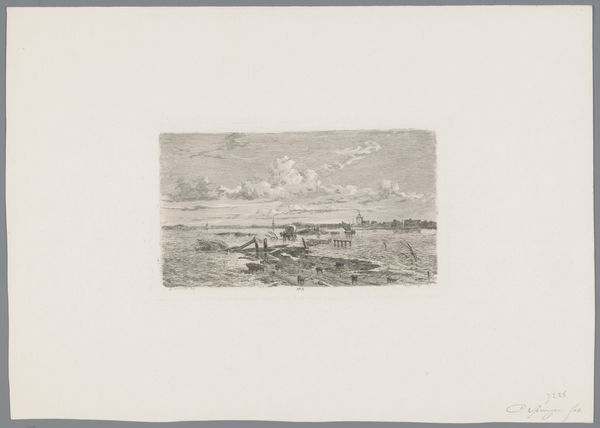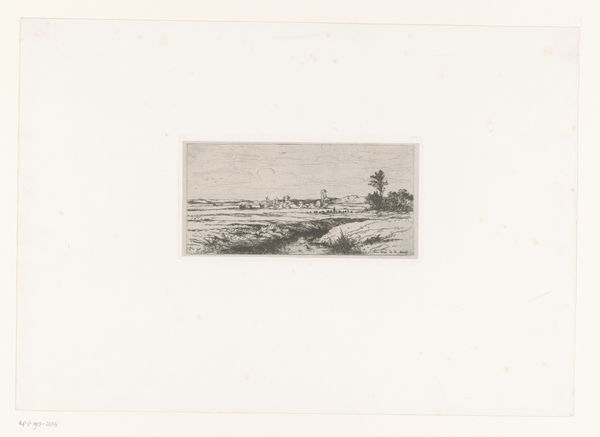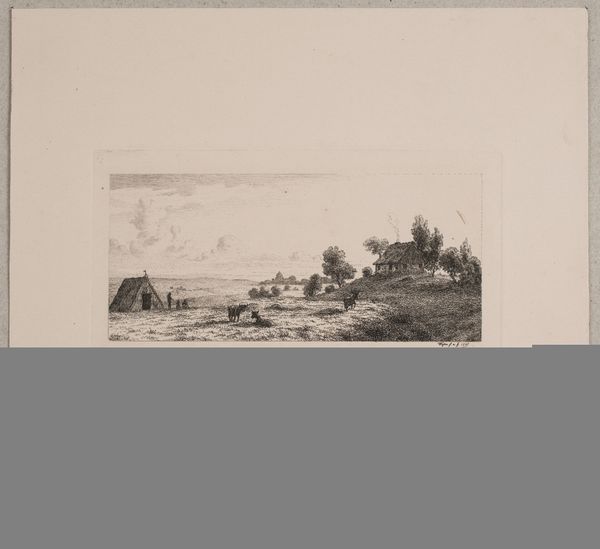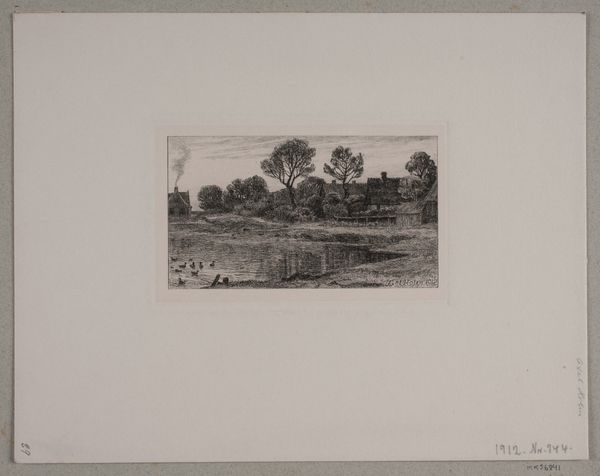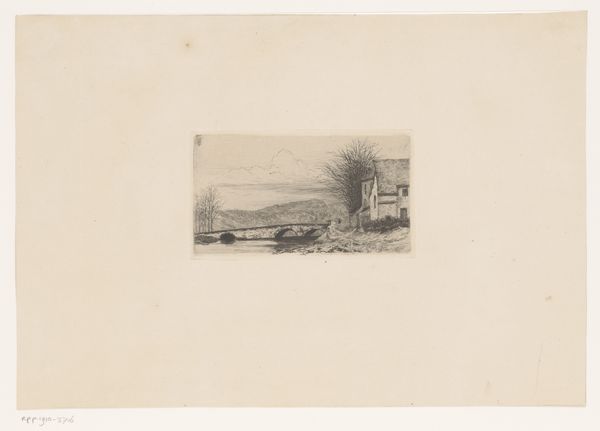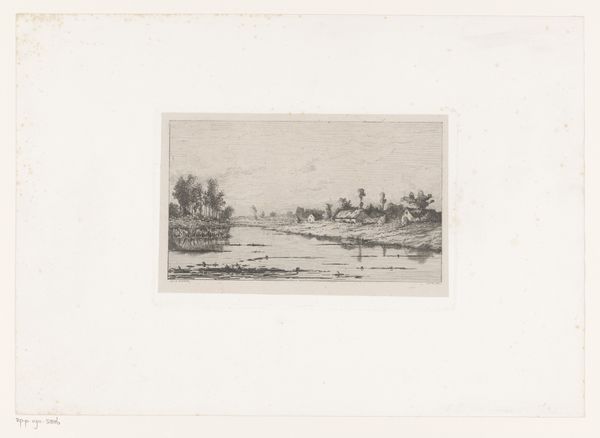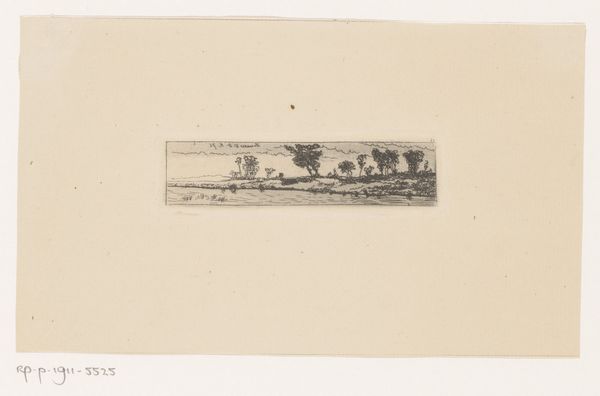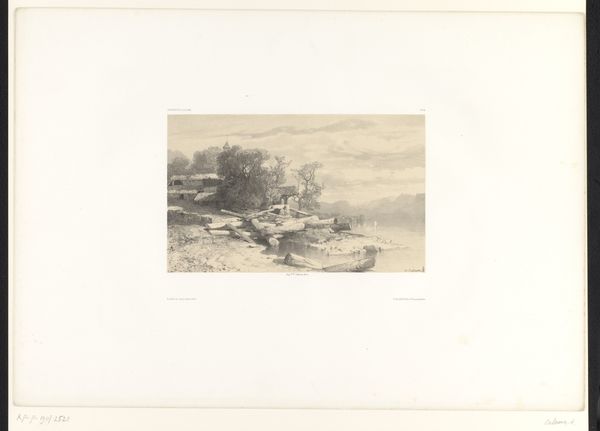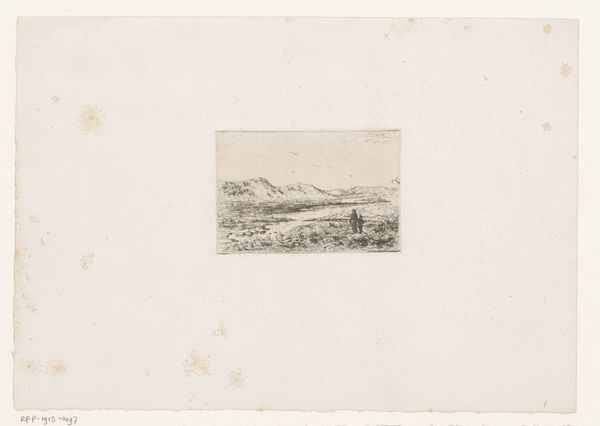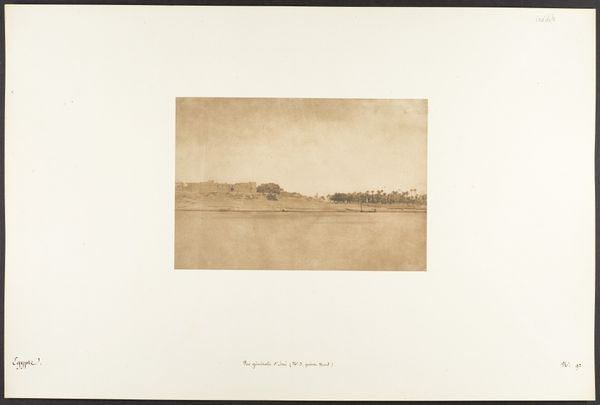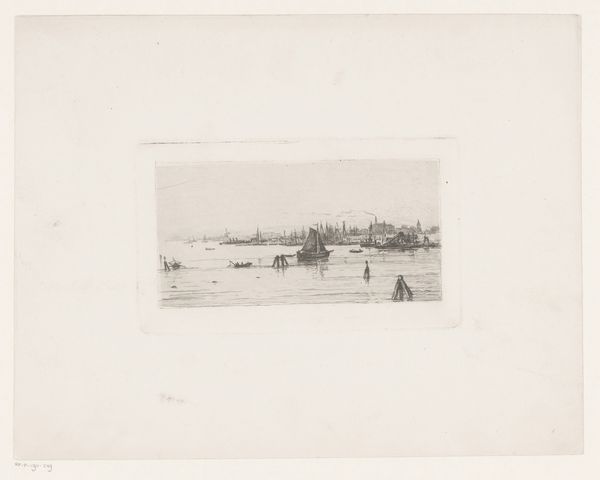
print, etching, paper
# print
#
etching
#
landscape
#
river
#
paper
#
realism
Dimensions: height 158 mm, width 238 mm
Copyright: Rijks Museum: Open Domain
Curator: Here we have Marcellin de Groiseilliez’s "Rivierlandschap", a river landscape etching from 1875, printed on paper. What are your first thoughts? Editor: Immediately, I'm struck by the dense, almost woven quality of the lines. You can really sense the artist meticulously working with the etching tool. It feels very textured, especially the water. Curator: Indeed. It's interesting to consider this image within the context of its time, right after the Franco-Prussian War. There’s a longing for idyllic, undisturbed nature present in so much of the art. Perhaps a respite from the anxieties of a nation in recovery? Editor: Exactly. And thinking about the materiality of printmaking itself, its reproducibility, the means of mass dissemination of imagery, especially landscape, and what this meant for who could possess and interpret the idea of 'nature.' What class gets access to this type of manufactured nature? Curator: That is a brilliant point. There is a very clear class component, where nature is not equally available to everyone and its consumption is regulated by money, power, and privilege. Do you see parallels with how landscape and leisure function today? Editor: I do. Consider eco-tourism; the commercialization of even the most 'untouched' places remains structured by economics. Curator: Thinking of its realism and composition, the light almost seems to be democratically distributed across the scene. The labor invested by Groiseilliez mirrors the backbreaking labor of living and extracting from this land, which the land will invariably keep on enduring. Editor: The way Groiseilliez handled the etching brings attention to its construction and process as an artifact produced and circulated to various levels of 19th century society. This emphasis mirrors contemporary interest in artistic transparency and ethical sourcing, issues still very relevant. Curator: Yes, absolutely, and while seemingly nostalgic at first glance, this "Rivierlandschap" raises fundamental questions that echo even louder today about accessibility and responsibility. Editor: It goes beyond pastoral nostalgia, showing the ways an object mediates not only visual culture, but political access and cultural discourse across the ages.
Comments
No comments
Be the first to comment and join the conversation on the ultimate creative platform.
